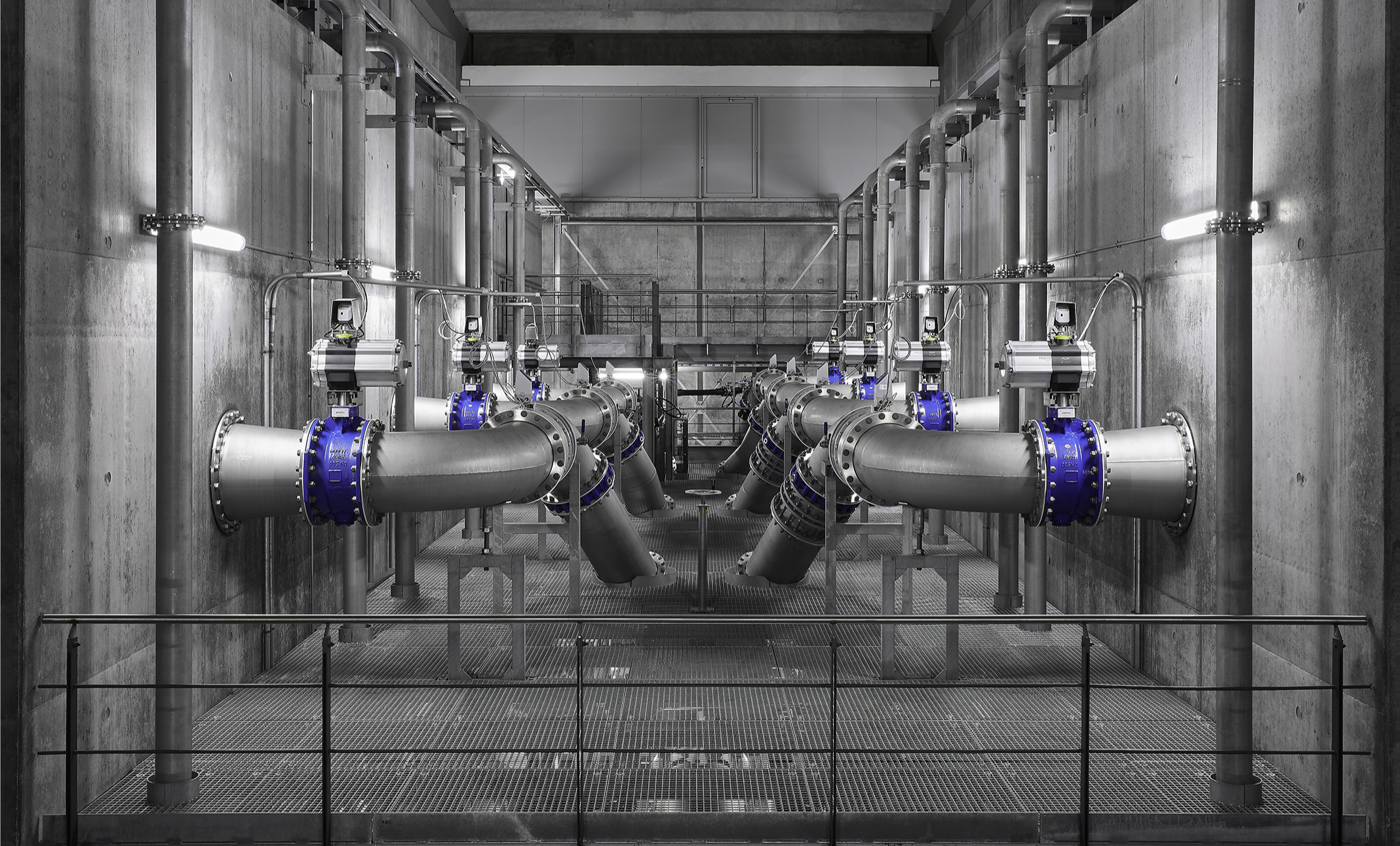High wear, costly maintenance, high energy costs- there is a whole series of myths perpetuated about pneumatic actuators, which make it appear less advantageous as an actuator technology than other alternatives. In some cases this has to do with misconceptions or outdated calculations. In other cases it is because disadvantages that play a role in certain applications and industries are transferred to the specific case. That is why a closer look is always worthwhile: what exactly is the application?
This blog puts four widespread assumptions under the microscope and takes a cold, hard look at whether there is any truth to them, based on current knowledge. This much we can say: in all cases the answer is not what it seems at first glance.
Myth #1: Pneumatics means more components. As a result, the technology has increased wear and therefore requires more costly maintenance.
A pneumatic system requires a whole range of components for compressed air generation: these include a compressor, a dryer and an air reservoir. In addition, pipes, tubes and valves are required to transport and switch the compressed air to the relevant actuators. At first glance, it seems that the number of accessories and therefore also the cost of maintenance as well as the risk of wear is multiplied.
The compressor only needs to be maintained once a year
However, compressed air generation is only required once. A compressor can supply several hundred actuators simultaneously without any problems. The average municipal water treatment plant, for example, will normally have between 50 and 200 actuators. And while screw-type compressors designed for high, continuous demand are required for the pneumatic actuators in large-scale industrial applications, reciprocating compressors are used in water management; these are handy devices that can, for example, be transported on a pallet. This is because the compressed air consumption in water treatment plants is relatively low. Many process valves only need to be switched once a day. This means that the compressor is also low maintenance – it only needs to be maintained once a year.
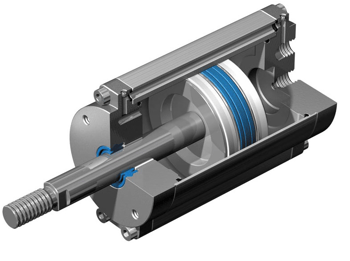
Sectional view of a pneumatic linear actuator
Pneumatic actuators are also resistant to vibration and lubricated for life. All this also means that a pneumatic actuator is completely maintenance-free. Another advantage is that the pneumatic actuator has a continuous output capability, so it does not need cooling-off phases as rest periods like an electric actuator. To put it another way – a pneumatic actuator is more durable in every respect.
| Note |
| Pneumatic actuators have a certain energy loss – but no more than alternative actuator types. Other calculations are based on outdated methods. Leaks are mostly minimal these days and also easy and cheap to locate and fix. |
Myth #2: The efficiency of pneumatics is extremely low. Most of the energy used is lost as heat. Added to this is the energy lost due to leakage.
The result of a study from the nineties cemented the idea in many minds that pneumatic actuators are only 7 percent efficient – which would mean that 93 percent of the energy generated by the compressor is lost. However, the study (published by Ilmberger/Seyfried, BWK, 1994) was already lacking substantiated information at the time of publication. From today’s point of view, however, the 24-year-old study can definitely be considered irrelevant since it was carried out on the basis of an outdated system.
The fact is that compressed air systems, as well as other systems, have a certain energy loss, starting with the compressor through the refrigeration dryer to the consumer connection. A recent study based on a modern system (EnEffAH – Energieeffizienz in der Produktion im Bereich Antriebs- und Handhabungstechnik [Energy Efficiency in Production in the Field of Actuator and Handling Technology], 2012) comes to the conclusion that the total energy input results in 42.1 percent usable efficiency as shown in Table 1 below.
Leaks are not something we have to put up with
There are also different numbers in circulation for leakage, which are no longer tenable from today's perspective. Today more than ever. the focus is on monitoring compressed air consumption and leakage detection- their importance is increasing. Large companies now have their own energy management systems and take regular measurements.
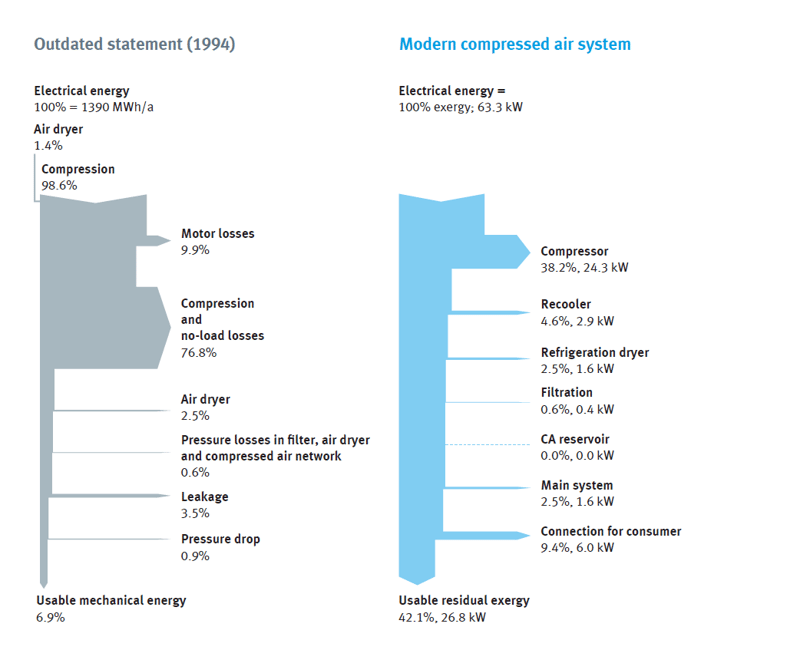 Table 1: Comparison of compressed air systems- from generation to application
Table 1: Comparison of compressed air systems- from generation to application
Myth #3: Pneumatics may be cheaper to purchase, but are expensive calculated over the lifetime.
In comparison of the different actuator alternatives between pneumatic, electric and hydraulic actuation, the prejudice persists that although pneumatics may be cheaper at first glance, the costs are much higher when calculated over the life-cycle. However, if actually depends very much on the application.
For example, in the water or wastewater industry, that uses its actuators at peak performance in continuous operation causes completely different operating costs in both pneumatics and electrics than a treatment plant that opens or closes its actuators and process valves on average. In the case of the latter, the operating costs are negligible compared to the investment costs.
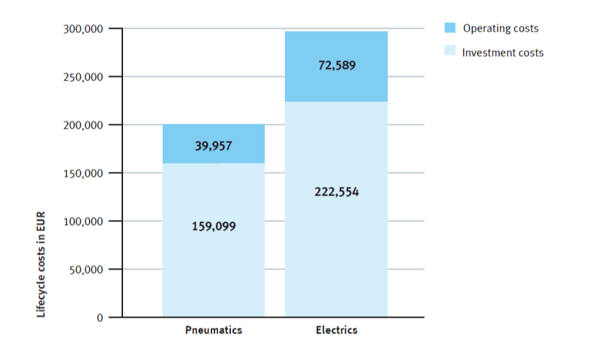 Table 2 Comparison of the lifecycle costs pneumatic and electric actuator technology in a water industry
Table 2 Comparison of the lifecycle costs pneumatic and electric actuator technology in a water industry
As shown in Table 2, the pneumatic solution is unsurprisingly cheaper when it comes to investment costs: around EUR 159,000 compared to around EUR 222,000 for the electric actuator. For the energy costs in operation, it is assumed that the filter is flushed once a week (this involves opening all the process valves once and then closing them again). The result is a comparatively short operating time that is, however, representative of the industry and its applications.
The total cost of ownership comes to approximately EUR 200,000 for the pneumatic system and EUR 295,000 for the electric valve actuator system. Also included in this incidentally are the costs for inspection and maintenance as well as the final dismantling during the disposal phase. The investment costs are therefore much higher in this example, the follow-up costs are just 20 to 30 percent. The total cost of ownership for the pneumatic solution is therefore almost a third lower.
Myth #4: Pneumatic components like tubing are complicated to install and additionally susceptible to leakage.
The connection between the solenoid valve and actuator is today established via a tubing / push-in fitting combination. The right combination is available for every application. All these combinations have one thing in common: they are easy to lay and reliable to install. The tubing is inserted into the fitting with a simple movement and held securely by a stainless steel retaining claw that does not damage the surface. Vibration and pressure surges are safely absorbed in this way. A sealing ring guarantees a perfect seal between the tubing and fitting. The complete installation can be performed without the need for a specialist.
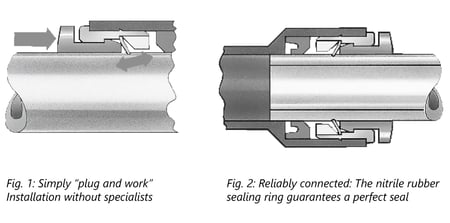 Push-in fittings-features as shown in Fig 1 and 2
Push-in fittings-features as shown in Fig 1 and 2
Current components are robust and easy to handle
The still perpetuated fear that the combination of tubing and push-in fitting is susceptible to leakage is unfounded these days, especially in view of the variety of products and high-quality components. The combination is even suitable for vacuum.
An advantage that is often overlooked: reliability
The ideal system is one that always runs- without problems, without interruptions and without failures. But every plant operator knows that this is ultimately a utopia. Most systems combine too many complex factors to run their whole lifetime without any problems. Whether the “human factor”, i.e. a mistake by an employee, or even completely external, also unpredictable influences, such as the failure of the electrical energy supply and the weather.
Pneumatic actuators demonstrate a strength in this context that some planning engineers do not even think about in advance: they are extremely resistant to a large number of these incalculable factors – and are comparatively easy to repair or switch using emergency
supplies.
Flexible response to unpredictable situations
Take power failure, for example: compressed air is available even if the power fails. In addition to the compressor, an air reservoir is ultimately also always available. This makes it easy to bridge power failures – depending on the required consumption, the compressed air can still be used for some time even if there is no power supply.
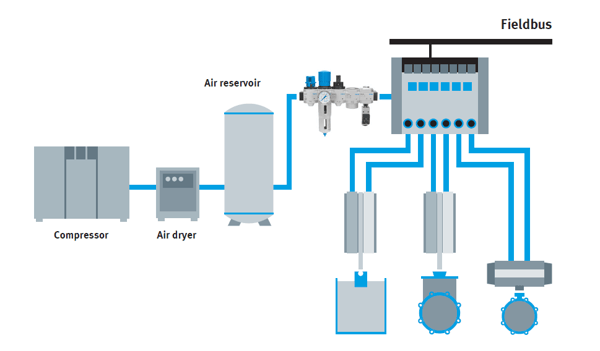
Fig 3: The air reservoir is an integral part of compressed air generation and always offers a reserve in the event of power failure
Pneumatic actuators permit a flexible response to a number of common unpredictable situations, for example, if a gate valve temporarily needs more power due to deposits that have collected on a slide gate over time, this can be very easily achieved by increasing the pressure.
If a defect actually occurs at any point in the actuator, an initial check can be performed without the need for specialists. Leaks can be identified or seals replaced without any in-depth knowledge – unlike with the electric actuator, where an electrician must be consulted whenever a failure occurs. Quite apart from the fact that pneumatic actuators are much more robust overall because of their comparatively simple structure, they are overload-proof, cannot overheat, and do not need either motor protection or cooling-off phases.
Want to know if pneumatics is the right solution for your industry?
Reliable, efficient and low maintenance, pneumatics might just be the right solution for your industry. To find out more, get in touch with us below!

Festo is a global player and an independent family-owned company with its head- quarters in Esslingen am Neckar, Germany. The company has become the global market leader in its sector over the past 60 years thanks to its innovations and problem-solving competency, as well as a unique range of industrial training and vocational education programs. Festo supplies pneumatic and electric automation technology to 300,000 customers in the field of factory and process automation in over 35 industries.
**All images were derived from festo.com

